If you like to shoot quality videos with your smartphone more and more equipped as shooting lenses, from wide angle to telephoto at some point you will find that tracking shots, panoramas, timelapses with panoramic, zooms on details are practically impossible to achieve. freehand or at least not with regular and continuous movements.
DJI Osmo Mobile 3 meets the needs of those who want to get videos with attention to the smallest details and the third version of the DJI Gimbal is updated with many features that make the smartphone and stabilizer set one versatile, compact and suitable for many shooting situations.
The packaging and the design
The gimbal is sold in two different packages: the first has a USB-C / USB power cable, a protective pouch and nothing else, the second ( Combo ) additionally includes a hard bag and a very low standard 1/4 mount plastic tripod that snaps into the standard hole in the bottom of the gimbal to provide the stability you need for fixed or panoramic time lapse shooting.
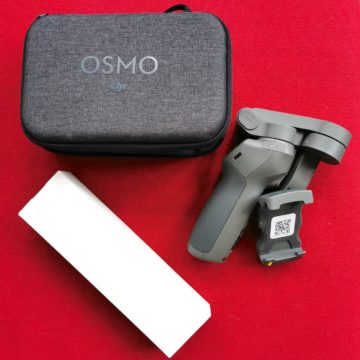
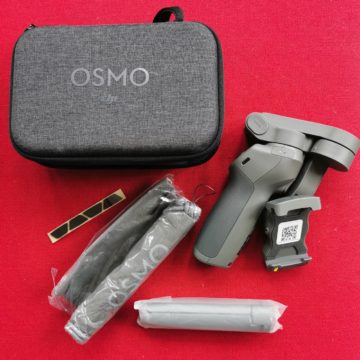
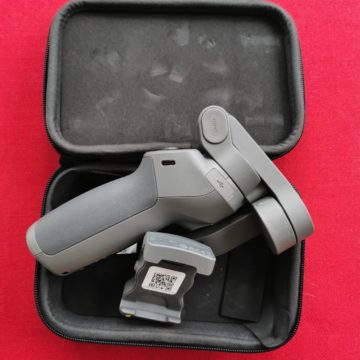
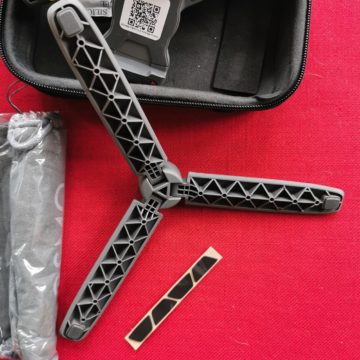
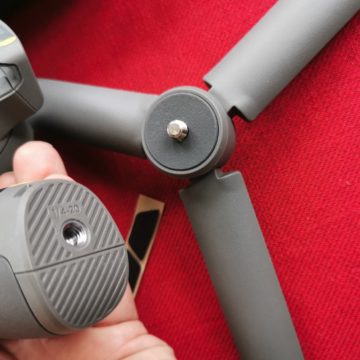
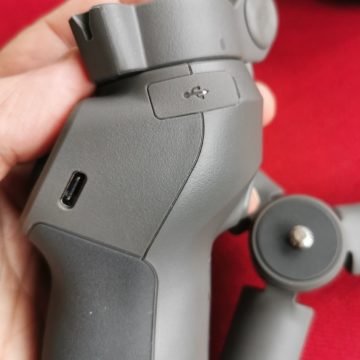
We tried the Combo version for a few weeks then we bought the simpler version because we already had a lot of similar tripods available. In any case, the supplied hard case is very well made and compact and best protects the gimbal in bags with a very “mixed” content: in any case we recommend the Combo version.
Compared to previous models there is a substantial difference in the fact that the gimbal is angled at 15 ° with respect to the vertical and has a trigger on the front: this allows a more ergonomic grip and, together with the matt rubber finish, a greater grip that makes use more natural and immediate and does not tire the hand even with long shots.
On board we find two USB sockets, a USB-C female to which we will connect a charger (not included) to reach up to 15 hours of autonomy (a data impressed and verified during two long days in an expo) and a standard USB hidden behind a flap. in rubber to which you can connect the charging cable of your smartphone.
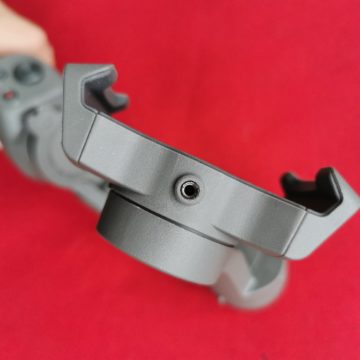
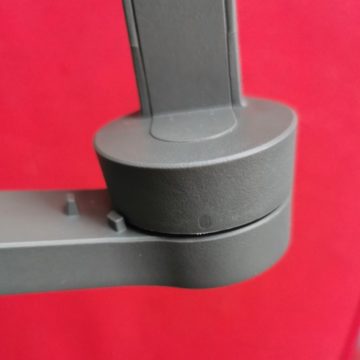
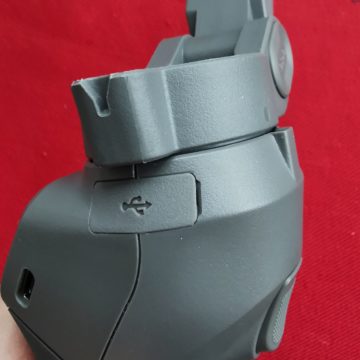
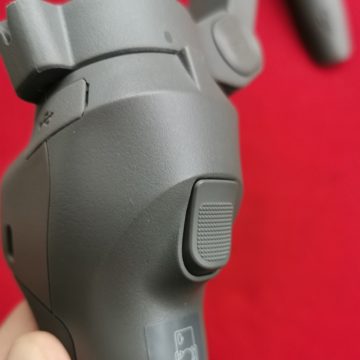
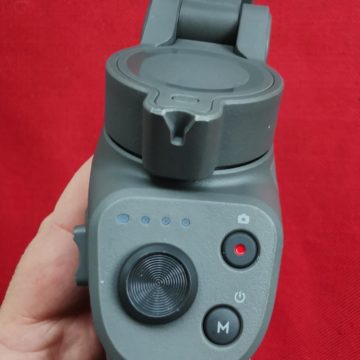
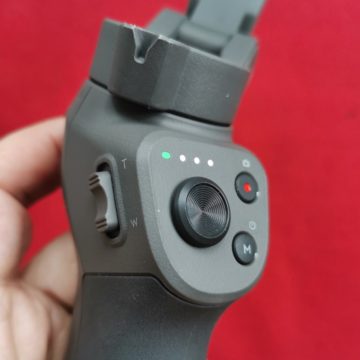
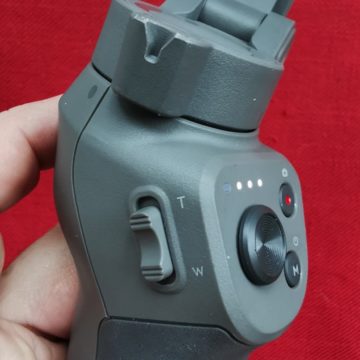 Left three quarters
Left three quarters 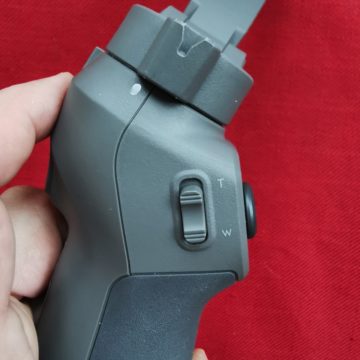 Zoom selector
Zoom selector 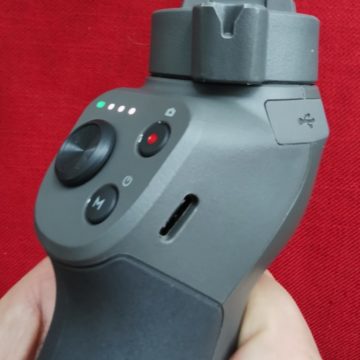 Charging power socket and power protection for smartphone
Charging power socket and power protection for smartphone
The other commands have functions described below (the app screens remind you what they are for): we have translated the captions in the app.
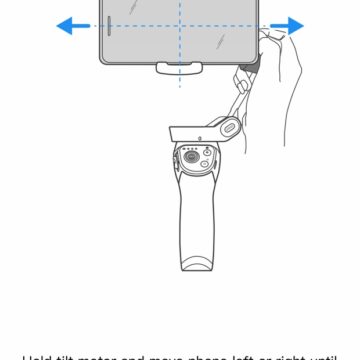 Manual horizontal stabilization
Manual horizontal stabilization 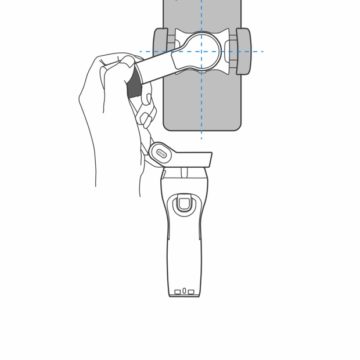 Vertical manual stabilization
Vertical manual stabilization 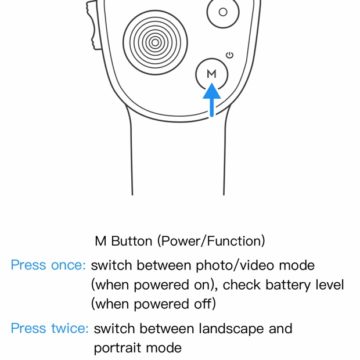 button M – Press once: switch photo video mode from on or check battery level from off – Press twice: switch between landscape and portrait mode – Press three times: enter sleep mode to save battery – Press and hold: power on or off
button M – Press once: switch photo video mode from on or check battery level from off – Press twice: switch between landscape and portrait mode – Press three times: enter sleep mode to save battery – Press and hold: power on or off 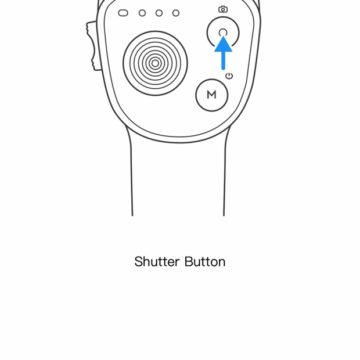 Snap button: take photo or start / close recording
Snap button: take photo or start / close recording 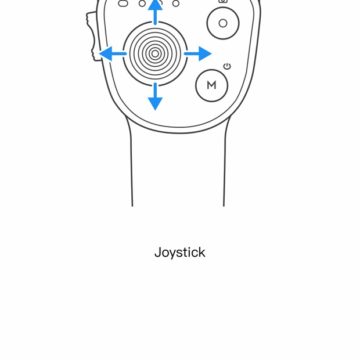 Joystick: for vertical / horizontal / panoramic pan and tilt
Joystick: for vertical / horizontal / panoramic pan and tilt 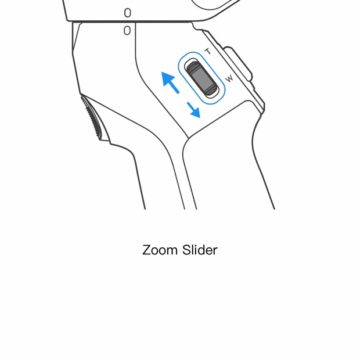 Zoom Slider
Zoom Slider 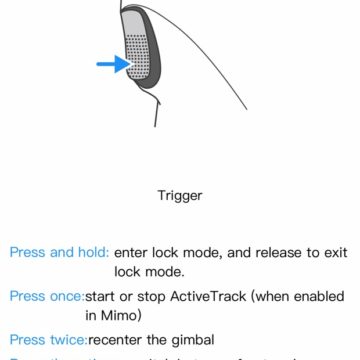 Trigger: – Press and hold: motion lock mode, release to exit – Press once: start or stop Active Track (if activated in the app) – Press twice: re-center the gimbal – Press three times: swap rear and front cameras – Prime once and then press and hold: enter Sport mode, release to exit
Trigger: – Press and hold: motion lock mode, release to exit – Press once: start or stop Active Track (if activated in the app) – Press twice: re-center the gimbal – Press three times: swap rear and front cameras – Prime once and then press and hold: enter Sport mode, release to exit 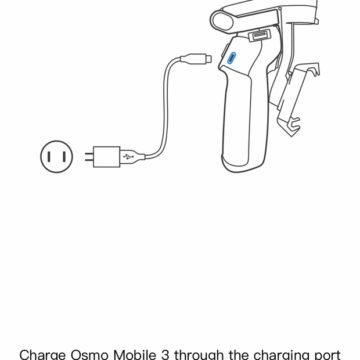 Charging with USB-C socket for 15 hours of battery life
Charging with USB-C socket for 15 hours of battery life
The size and attachment of the smartphone
If the best camera is the one you always have ready to shoot, we could say the same about the Gimbal: if you can always carry it with you in a big pocket, backpack or pocket of “technical” trousers it certainly becomes more useful and immediate and this is the first feature of Osmo Mobile 3: thanks to the “collapsible” configuration it can be folded easily like the most recent DJI drones and you can take it out at any time, insert the phone, hook a microphone or connect the charging load seen that the two sides now remain completely free.
The displacement of the lateral coupling frees up the possibility of insertion and connection even with large telephones without the insertion of counterweights or strange positioning and undoubtedly brings many benefits but somehow forces you to change the shooting modes from below: you will get used to it quickly.
The gimbal gives a useful advice on positioning including that of where the smartphone camera should be placed.
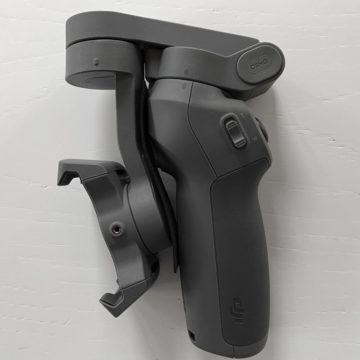 Left side
Left side 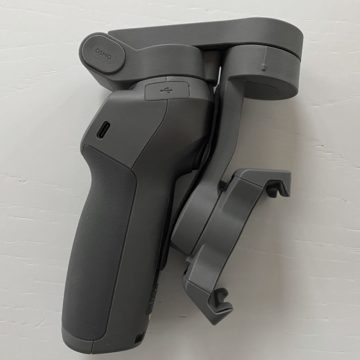 Right side
Right side 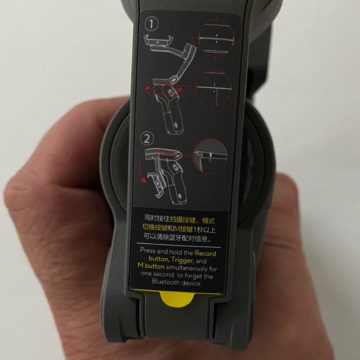 Not to forget how to open the gimbal and how to reset the bluetooth connection
Not to forget how to open the gimbal and how to reset the bluetooth connection 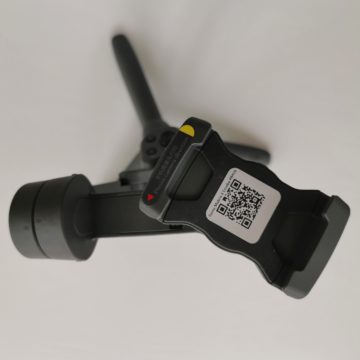 Top view with open jaws
Top view with open jaws 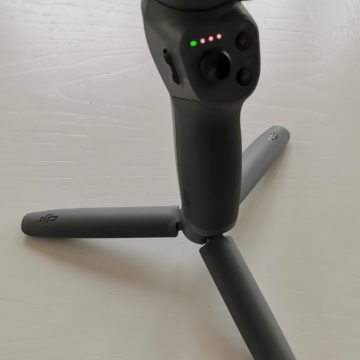 connection and charge are clearly visible
connection and charge are clearly visible 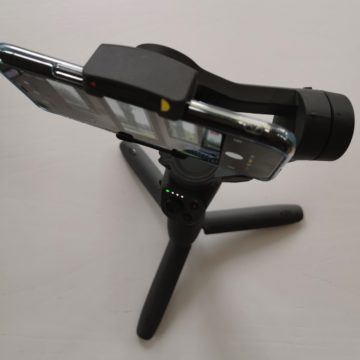 Mounted on the tripod
Mounted on the tripod 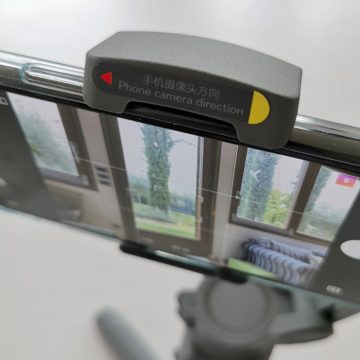 In order not to forget the way to mount the phone
In order not to forget the way to mount the phone 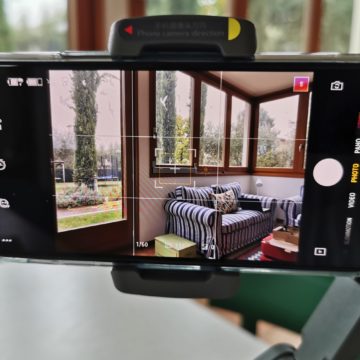 The Momentto Phone on the Gimbal
The Momentto Phone on the Gimbal 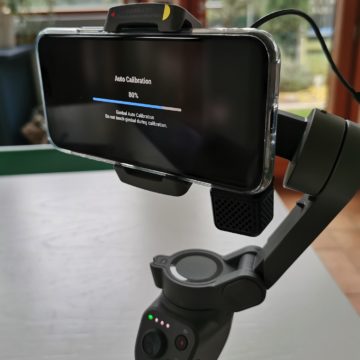 Here we are at the end of the auto calibration
Here we are at the end of the auto calibration
The two jaws have an excellent excursion and we were able to hook without problems 6.5 “phones with thick covers among other things without interfering with the volume and power buttons thanks to the concavity inside of the calipers.
As we will see, the smartphone is initially balanced “by hand” to find the position of minimum effort for the motors: given the total symmetry of many models, the real center of gravity is almost always in the center of the screen but small adjustments allow to obtain the optimal result. If you have a case on which you can write or make a mark, we advise you to trace the right and left, lower and upper edges of the jaws to reposition the smartphone quickly in the optimal position.
Once the phone is hooked up it is practically always better to recalibrate it by placing it on a flat surface to avoid a slight “drifting” during the shooting phase … obviously if you are in a forest or on a beach it will be difficult to do so and for this it is always good to have a coupling reference.
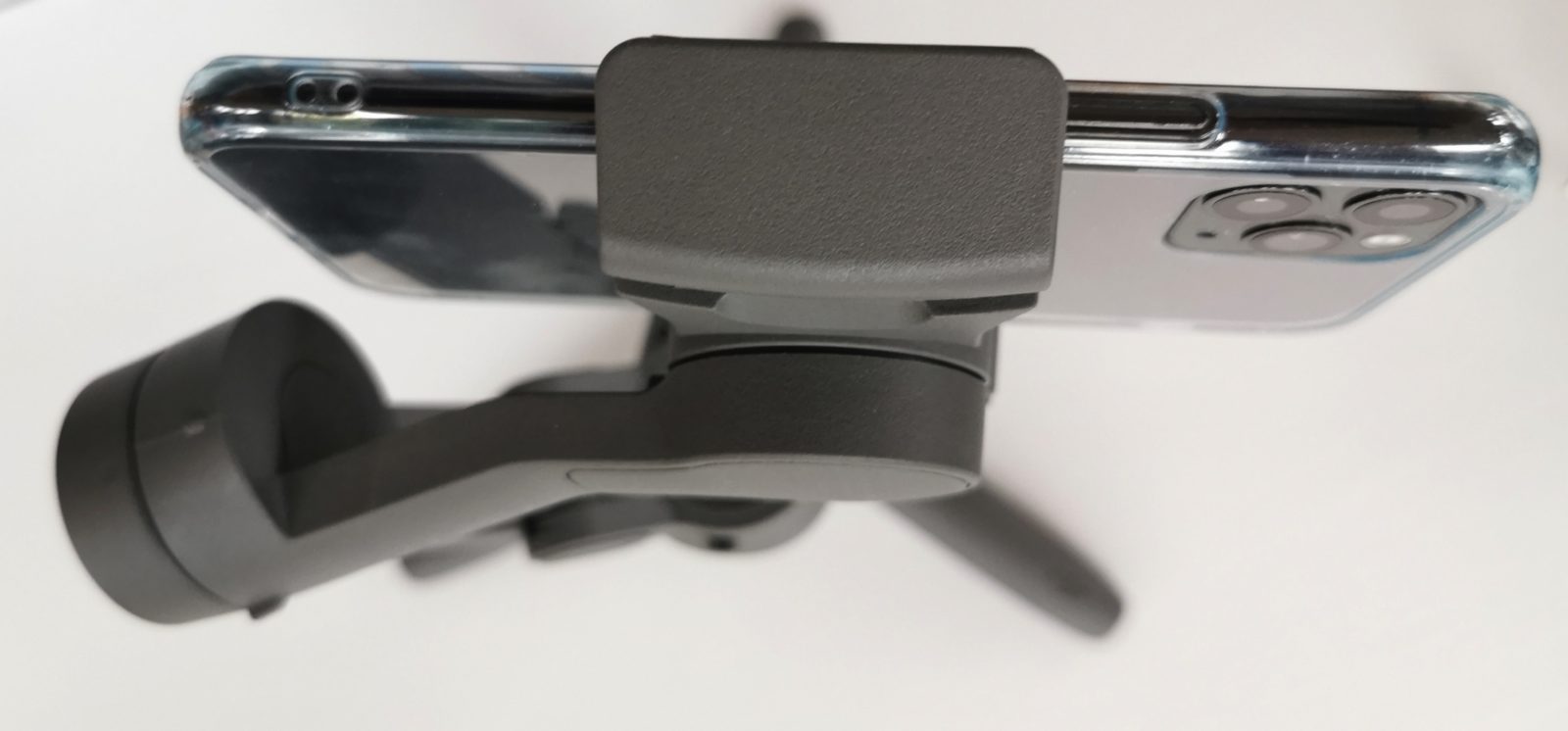
We must say that in daily use in a fair in which we have repeatedly removed and put the smartphone back in the gimbal we did not have great need for recalibration: with a medium-sized iPhone, the motors have sufficient strength to adjust the position and manage the counterweights. .
Among the different DJI and third-party models that we have personally tested, this is certainly the most immediate one to use to be immediately ready for shooting.
The application and shooting methods
To manage the Osmo Mobile 3 you no longer use the DJI Go app but DJI Mimo which allows you to connect, calibrate and check the shooting modes through the Bluetooth LED connection between the phone and the device and this, once the first connection occurs automatically when the gimbal is turned on and the relative menu is accessed,.
The app, in addition to accessing a series of tutorials and videos shot with the help of Osmo Mobile 3 and other DJI devices, allows you to select all shooting modes, some of which are available primarily for iPhone and not for Android. .
The modes are: Photo, Panorama, Video, Slow motion, Hyper-lapse, Active Track 3.0 which automatically follows the moving subjects and finally with the Sport mode which makes the motors in the case of sports shooting.
There is also a control through the gestures that allows, once you have positioned the gimbal + smartphone on a tripod, to get you back after a countdown “triggered” by your open hand to center your face and let the lens follow you while you move. This mode is interesting the more you use recent smartphones with a quality front camera (iPhone 11 and 11 Pro / Max) that allows you to shoot very high resolution images and at the same time to monitor the effectiveness of the Active Track.
Below you can see all the application control menus, from the shortcut menu to the various shooting options to resolution and control preferences.
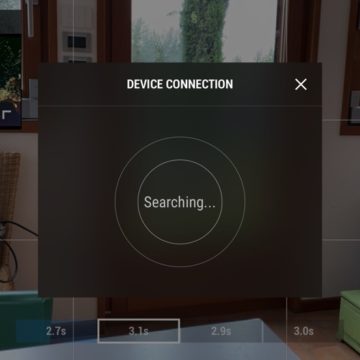 Finding Osmo
Finding Osmo 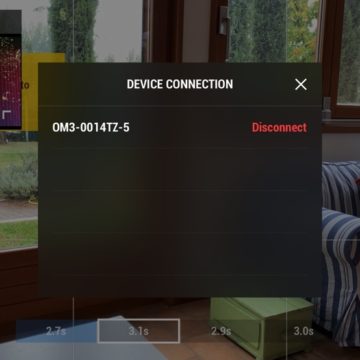 Osmo recognized
Osmo recognized 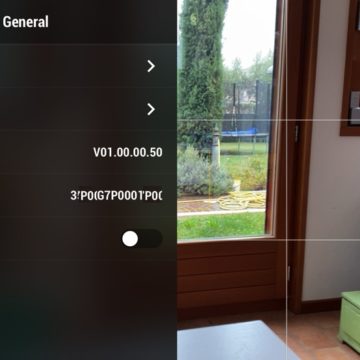 The data of the gimbal and the possibility of adding a watermark directly in shooting
The data of the gimbal and the possibility of adding a watermark directly in shooting 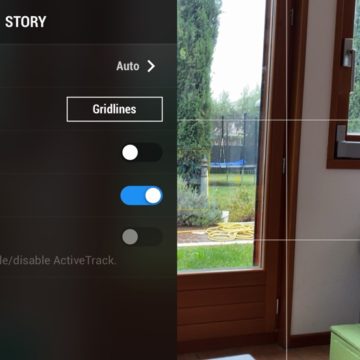 We activate the grids, the account countdown for selfie videos and photos and activation of Active Track with the trigger
We activate the grids, the account countdown for selfie videos and photos and activation of Active Track with the trigger 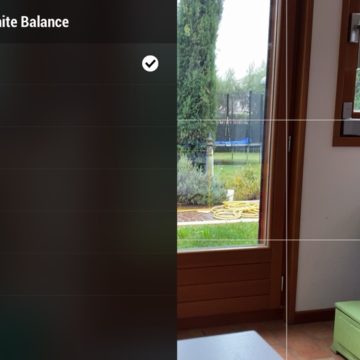 Manual White Balance Adjustment
Manual White Balance Adjustment 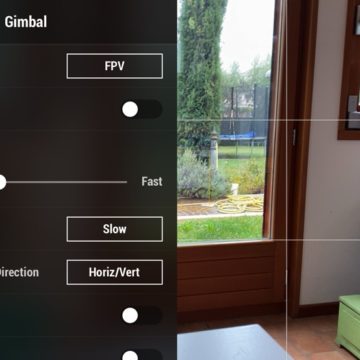 Qji we can automate the follow mode according to the subjects
Qji we can automate the follow mode according to the subjects 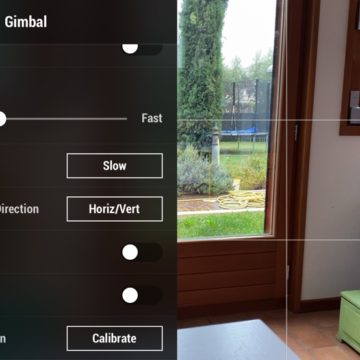 Here we check zoom speed, joystick interactivity and activate calibration
Here we check zoom speed, joystick interactivity and activate calibration 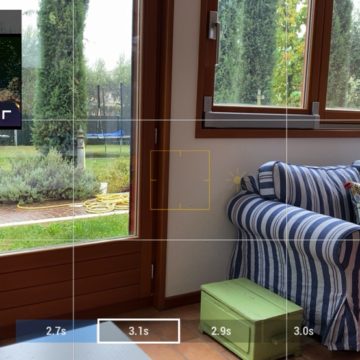 The scenes prepared with the duration of the shots: top right the tutorials to understand what we will shoot
The scenes prepared with the duration of the shots: top right the tutorials to understand what we will shoot 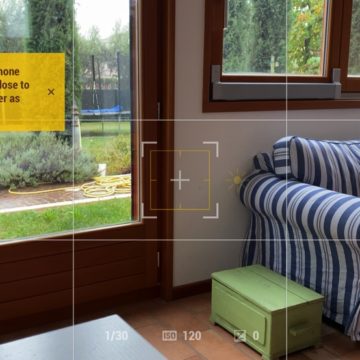 When the gimbal did not work a correctly see this notice
When the gimbal did not work a correctly see this notice 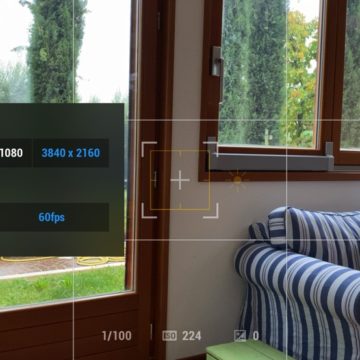 Selectable resolution and fps
Selectable resolution and fps  Here we can choose manual or automatic mode
Here we can choose manual or automatic mode 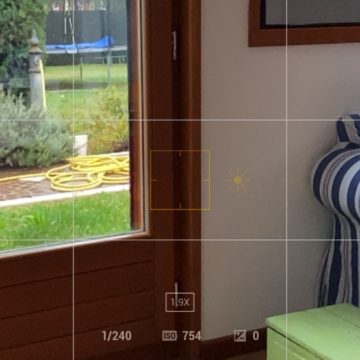 Slow motion: note the shooting data and exposure compensation in the center
Slow motion: note the shooting data and exposure compensation in the center 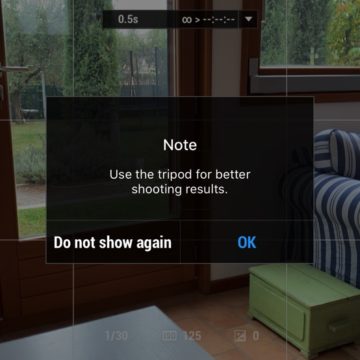 Timelapse: absolutely necessary the tripod and Osmo reminds you
Timelapse: absolutely necessary the tripod and Osmo reminds you 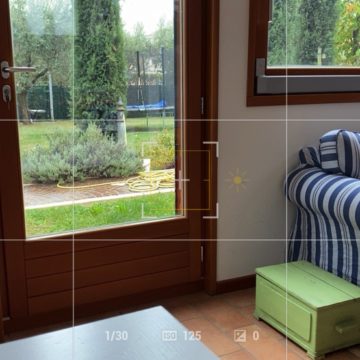 Hyperlapse: here you will choose the accelerated shooting speed and resolution
Hyperlapse: here you will choose the accelerated shooting speed and resolution 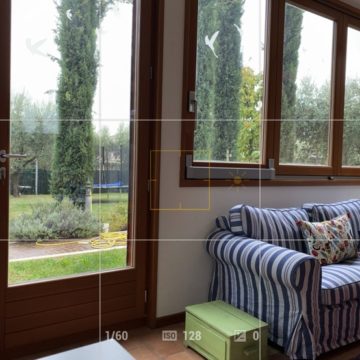 The panorama modes: a 3 × 3 matrix or a 180 ° shot
The panorama modes: a 3 × 3 matrix or a 180 ° shot
For Instagram professionals
The gimbal also records subjects vertically and, unlike other similar devices and its DJI predecessors, there is no need to reposition the smartphone and the transition from landscape to portrait mode is almost immediate and can also be done during a shoot. .
For those who want to enrich the shots within the DJI mimo App there is the Story Mode which consists of a series of templates that mix digital effects and transitions without, at the moment, the possibility to edit duration and titles but probably the software will evolve and become more useful and malleable and more suitable for an international audience.
Is there really everything?
Having used an application like Filmic Pro and DJI's professional gimbals you will find that 24P modes are missing, that the slow motion works of the app works at 720 with no other options, on Android there is currently no exposure compensation. We would also have liked a more precise control of the speed of the motors with a super slow option, just the opposite of the Sport mode which among other things is very effective and is activated quickly with the trigger when it is necessary to act quickly on the movements of the gimbal.
Not that some missing features can't be achieved with third party apps like the aforementioned Filmic Pro (which also has the use of OSMO as an option) but DJI's app could easily buy more options in the coming months
Conclusions Even if the DJI Ronin gimbals can have some more functions and a robustness beyond question, the price / performance ratio actions and the absolute practicality of Osmo Mobile 3 for liveblogs, interviews, videomaking in the field combined with its relative compactness and low weight make it a “natural” best buy that changes the very concept of a Gimbal as a bulky accessory that is difficult to carry and manage . Osmo Mobile 3 you carry it with you in your backpack, in a pocket, you take it out, if necessary do a quick calibration and then the shots become all fluid, the panoramas sweet and you can add new shooting skills.
With the supplied tripod or with a stable stand you can create video selfies with tracking / tracking of absolute ease.
In the next few days we will see in detail (and with video) how Osmo Mobile 3 and recent iPhones get married with accessories and apps for shooting.
Pro
Versus
Retail price
DJI Osmo Mobile 3 costs 109 Euros to the public in the basic version with transport pouch and 129 Euros in the combo version with pouch, tripod and hard case. Distribution for the retail channel is entrusted to Attiva.




